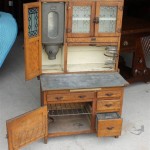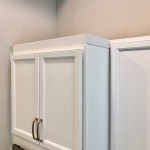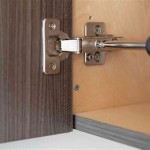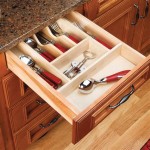Antique Kitchen Cabinet Doors: A Guide to Preservation and Restoration
Antique kitchen cabinet doors represent a tangible link to past eras, showcasing craftsmanship and design aesthetics that are often absent in contemporary cabinetry. These doors can be found in a range of styles, from the simple, functional designs of early colonial kitchens to the more ornate and decorative pieces of the Victorian and Edwardian periods. Preserving and, when necessary, restoring antique kitchen cabinet doors requires a comprehensive understanding of their construction, materials, and potential for damage.
Identifying the age and style of antique kitchen cabinet doors is the first crucial step. Factors such as the type of wood used (e.g., pine, oak, cherry, walnut), the hardware (e.g., hinges, knobs, latches), and the overall design (e.g., raised panel, flat panel, Shaker style) provide valuable clues. Researching these elements through historical resources, architectural guides, and antique furniture catalogs can help determine the approximate period of origin and the original intended use of the cabinet. This information is invaluable when making decisions about restoration or conservation efforts.
Proper handling and storage are paramount to preventing further deterioration of antique kitchen cabinet doors. Before undertaking any cleaning or repair work, the doors should be carefully removed from their frames and placed on a clean, flat surface. Avoid stacking doors on top of each other, as this can lead to scratching and warping. If long-term storage is necessary, the doors should be stored in a climate-controlled environment with stable temperature and humidity levels to minimize expansion and contraction of the wood. Wrapping the doors in breathable fabric, such as cotton sheets, can offer additional protection from dust and scratches.
Understanding Common Damage to Antique Cabinet Doors
Antique kitchen cabinet doors are susceptible to a variety of types of damage due to age, use, and environmental factors. Identifying the type and extent of damage is essential for determining the appropriate course of action for repair or restoration. Some of the most common types of damage include:
Warping: Warping occurs when the wood fibers in the door expand or contract unevenly, causing the door to bend or twist out of shape. This can be caused by fluctuations in humidity, exposure to moisture, or improper storage. Mild warping may be corrected through careful clamping and humidification, while severe warping may require more extensive repairs or even replacement of damaged sections.
Cracking and Splitting: Cracks and splits can develop in the wood due to drying out, impact damage, or seasonal changes. Small hairline cracks may be stabilized with wood glue, while larger splits may require the insertion of wood shims or the application of epoxy fillers. It is important to use adhesives and fillers that are compatible with the type of wood used in the door and that will not cause further damage.
Damage to Finishes: Original finishes on antique cabinet doors, such as paint, varnish, or lacquer, may become chipped, faded, or discolored over time. Attempting to remove or alter original finishes can significantly diminish the historical value of the door. Instead, conservation efforts should focus on cleaning and stabilizing the existing finish, using gentle cleaning solutions and protective coatings.
Insect Infestation: Wood-boring insects, such as termites and woodworms, can cause extensive damage to antique cabinet doors. Signs of infestation include small holes in the wood, powdery dust (frass) around the door, and weakened wood. If insect infestation is suspected, the door should be treated with a suitable insecticide and isolated from other wooden objects to prevent the spread of the infestation.
Hardware Damage: Hinges, knobs, latches, and other hardware components can become damaged, corroded, or missing over time. Replacing missing hardware with reproduction pieces that match the original style and finish can enhance the aesthetic appeal and functionality of the cabinet door. Corroded hardware can be cleaned and restored using appropriate metal cleaning solutions.
Cleaning and Preserving Antique Cabinet Doors
Effective cleaning is essential for preserving antique cabinet doors, but it is crucial to use gentle methods that will not damage the original finish or the wood itself. Avoid harsh chemicals, abrasive cleaners, and excessive moisture, as these can cause irreversible damage.
Begin by removing loose dust and debris with a soft brush or vacuum cleaner with a brush attachment. For light cleaning, a solution of mild soap and water can be used. Dampen a soft cloth with the solution and gently wipe the surface of the door. Avoid soaking the wood or applying excessive pressure. Rinse with a clean, damp cloth and dry thoroughly.
For stubborn dirt or grime, a specialized wood cleaner may be necessary. Choose a cleaner that is specifically designed for use on antique furniture and follow the manufacturer's instructions carefully. Test the cleaner on an inconspicuous area of the door before applying it to the entire surface to ensure that it does not damage the finish.
Once the door is clean and dry, a protective coating of wax or polish can be applied to help preserve the finish and protect it from further damage. Choose a wax or polish that is specifically designed for use on antique furniture and apply it sparingly with a soft cloth. Buff the surface to a shine.
Regular dusting and occasional cleaning can help keep antique cabinet doors in good condition for many years. Avoid placing the doors in direct sunlight or near sources of heat or moisture, as these can cause damage. Monitor the doors regularly for signs of damage or infestation and take prompt action to address any problems that arise.
Restoration Considerations and Techniques
Restoration of antique kitchen cabinet doors involves more extensive repairs and may require the skills of a professional furniture restorer. Before undertaking any restoration work, carefully assess the condition of the door and develop a detailed plan of action. Consider the historical significance of the door and the potential impact of any restoration work on its value.
When repairing cracks and splits, use wood glue and clamps to secure the damaged pieces together. For larger splits, wood shims or epoxy fillers may be necessary. Use fillers that are compatible with the type of wood used in the door and that can be stained or painted to match the surrounding area.
If the original finish is severely damaged or missing, it may be necessary to refinish the door. However, refinishing can significantly diminish the historical value of the door, so it should only be considered as a last resort. When refinishing, use techniques and materials that are appropriate for the age and style of the door. Consider using a professional furniture restorer who has experience working with antique finishes.
Replacing damaged or missing hardware with reproduction pieces that match the original style and finish can enhance the aesthetic appeal and functionality of the cabinet door. Source high-quality reproduction hardware from reputable suppliers who specialize in antique furniture restoration.
When undertaking any restoration work, document the process carefully with photographs and written notes. This documentation can be valuable for future restoration efforts and can also enhance the historical value of the door.
Ultimately, the goal of restoring antique kitchen cabinet doors should be to preserve their historical integrity while ensuring their functionality and aesthetic appeal. By carefully considering the condition of the door, the historical significance of the door, and the potential impact of any restoration work, it is possible to restore antique cabinet doors to their former glory.

Reform Space With Antiqued Kitchen Cabinets May 2025

Antique White Raised Panel Sample Door For Kitchen Cabinets And Bathroom Vanities

Set Of 4 Antique Gumwood Pantry Cabinet Doors Circa 1920

10x10 Casselberry Antique White Kitchen By Cabinetselect

Antique White Kitchen Cabinet 1920s

Ulysses Antique White Cabinets Door Clearance Center

Antique Mirrored Cabinet Doors Design Ideas

Antique Pantry Cupboard Pick Up Only

Antique Mirrored Cabinet Doors Design Ideas

Plywell Ready To Assemble 27x30x12 In Holden High Double Door Wall Cabinet Antique White Awxw2730
Related Posts








